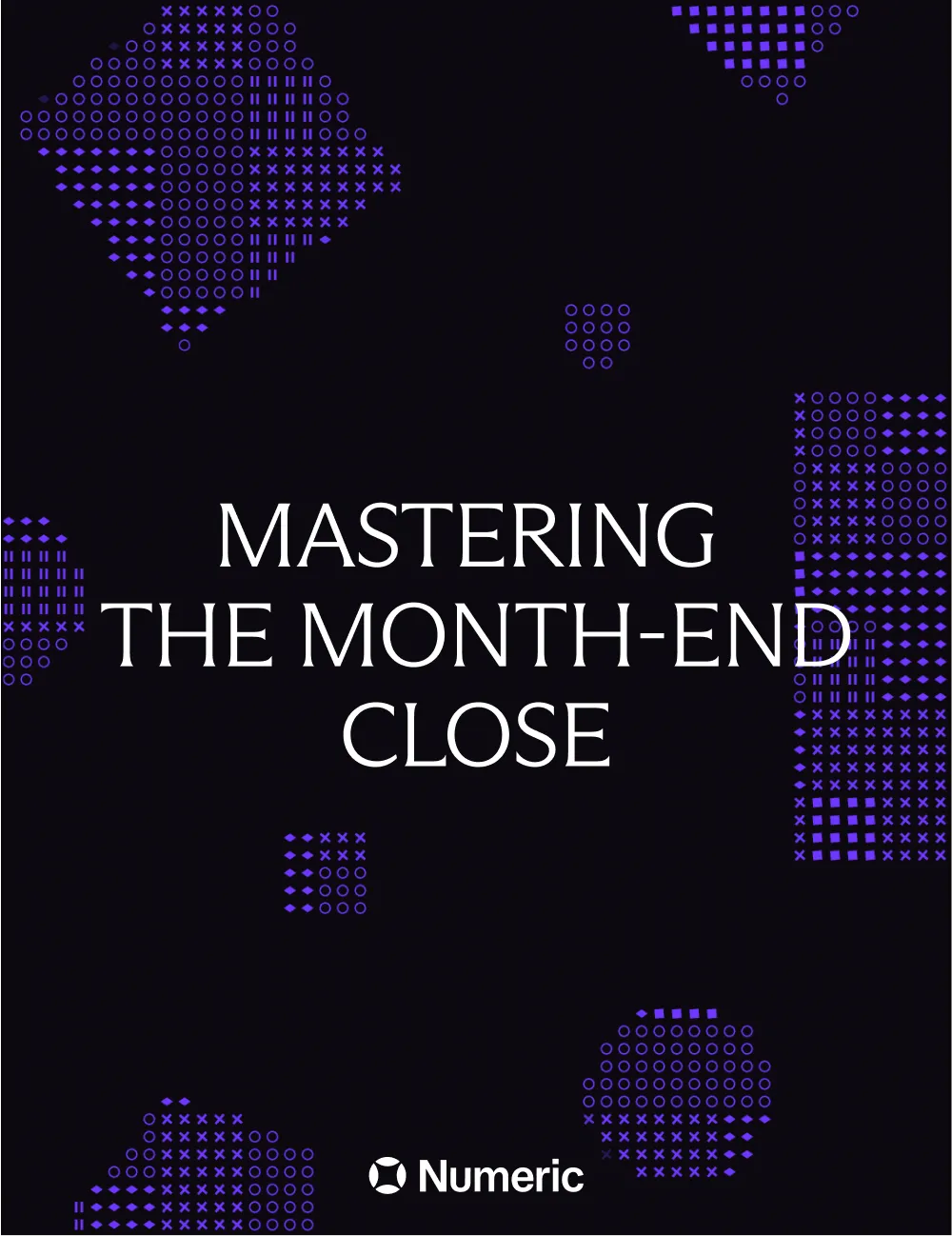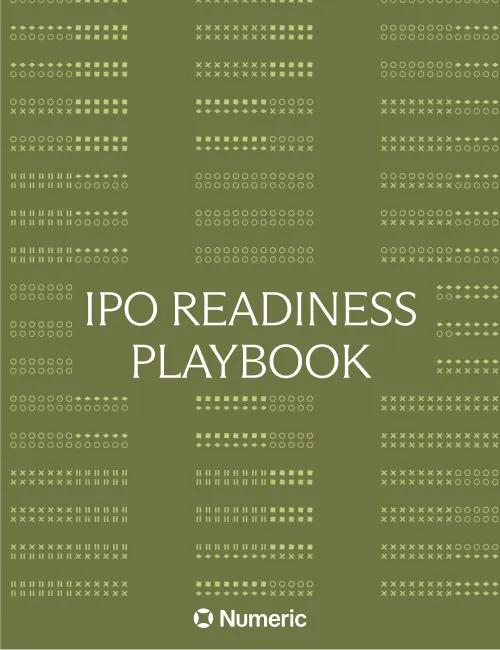Guide to Accounting Reports: From Manual Chaos to Automated Excellence
.png)
Though accounting is a field that demands precision and quantitative rigor, 18% of accountants make financial errors daily, while 59% of them make several errors each month.
According to the same survey, a main driver of error rates is the growing workload faced by accounting teams. Complexity has increased due to regulatory requirements and economic volatility, meaning that the status quo for accounting teams is more work as time goes on, not less.
More work means frequent errors, slow outputs, and an unhappy finance team. Bad for business on all counts.
The two saving graces for accounting teams today are automation and AI. Teams are already using these technologies to handle low-hanging fruit like document processing, but other viable use cases, like with accounting reports, continue to emerge.
This guide offers a practical framework for applying AI and automation to the task of creating accounting reports. You’ll learn the various types of accounting reports, what they’re used for, and how to prepare them more quickly and with fewer errors.
Key takeaways
- Accounting reports convert raw transactions into decisions. Treat the reporting process as a product with clear ownership and SLAs.
- Report value depends on upstream discipline. Standardize data, reconcile continuously, and document at the point of entry.
- Automate the busy work. Route exceptions to humans. Keep an audit trail by default.
- Pair financial statements with management reports and variance analysis. That combination creates insight and inspires action.
- Platforms like Numeric help teams cut manual steps, enforce controls, and publish faster, audit-ready reports with less effort.
What Are Accounting Reports and Why They Matter More Than Ever
Accounting reports are structured documents that communicate ledger activity in a human-readable way. They summarize, explain, and show evidence for financial performance. Good reports illustrate financial realities and empower leaders to act with confidence.
Reports matter more than ever because finance teams no longer simply “close the books”. Today, teams are expected to produce insights that can inform strategy, quantify tradeoffs, and highlight risk.
Rising Stakes of Reports
So, why do reports take on such importance for finance teams?
- Integration and insight. Reports feed planning cycles, board decks, and dashboards. Finance must connect ERP actuals to BI models and other systems in order to leverage real-time data.
- Agility. Faster reporting compresses decision cycles. Days matter when organizations seek to maneuver a dynamic economic landscape.
- ESG expectations. Teams increasingly report on non-financial metrics using frameworks like GRI and SASB. Methodology and auditability count.
- Regulatory scrutiny. Accuracy, consistency, and access controls are non-negotiable. Mistakes lead to fines and reputational damage.
- Forward-looking purpose. Controllers and CFOs are expected to interpret results and propose actions, not only reconcile historical data.
Essential Reports for Accounting Teams
While there are industry norms for what a given type of report should include, the relevance of one report versus another is highly contextual. Depending on the granularity of insight required or the time period in question, the most relevant report may not be immediately apparent.
What follows is a set of best practices for each common accounting report:
Financial Statements — The Foundation
These three statements are standard. They are the external face of the company, so without a doubt they should be correct, consistent, and supported.
Balance sheet
- When to use it: When you need a point-in-time view of solvency, leverage, or the organization’s general financial position. Useful in credit reviews, covenant checks, and cash runway planning.
- Sample use case: A lender wants to see your financial ratios. You clean up the data by making sure everything maps correctly, removing intercompany noise, and then export a clean current ratio and debt-to-equity. The balance sheet provides a clear one-page view of the organization.
Income statement
- When to use it: When you need a period view of revenue, cost, and operating leverage. Can inform pricing reviews, margin work, spend control, and operating plans.
- Sample use case: Your company’s revenue is up 12%, but gross margin is down. You reconcile hosting costs, identify a unit price increase from a vendor, and give your product team a target for cost recovery.
Cash flow statement
- When to use it: In cases where you need to explain liquidity movements. Great for assessing working capital, capex timing, M&A, or financing actions.
- Sample use case: Your business shows positive net income but negative operating cash. You identify DSO creep and adjust your collections strategy accordingly.
Management and Operational Reports
These are internal reports, but that doesn’t mean they’re not critical. Actions taken between formal closes depends on the accuracy of these reports.
Flash P&L
- What is it: A flash P&L is a brief, on-the-spot financial report that provides a snapshot of your organization’s profitability over a given period of time
- When to use it: Early in the month to get a quick read on revenue and spend trajectory before the books are closed.
- Sample use case: Marketing spend is trending 15% over plan. You pause discretionary campaigns for two weeks to stay on track before re-evaluating next month.
Variance analysis
- What is it: Variance analysis is a comparison of projected figures against actuals. The difference between forecasted numbers and actual results is called variance, and the goal of analysis is to explain that difference.
- When to use it: After actuals are in, use it to compare results against budget or forecast. Identify variance drivers and model corrective actions.
- Sample use case: Travel expenses are 20% over plan. Variance analysis shows the spike came from last-minute flights booked for sales meetings. You partner with sales to set booking guidelines and reach out to airlines for preferred rate options.
KPI dashboards
- What is it: Real-time dashboards pull data from your systems and use it to track performance against KPIs at each level of the organization.
- When to use it: On an ongoing basis, use dashboards to monitor a handful of critical metrics that show business health in real time.
- Sample use case: You track gross margin by product, bookings, churn, DSO, and days to close. A spike in churn flags a retention issue. You notify the customer success team.
Compliance and Regulatory Reports
As accountants, we’re no strangers to compliance and regulation. Compliance rules and guidelines are there to ensure rigor in the accounting process, which in turn should be reflected in the quality of our reports.
Tax Filings
- What is it: Organizations of all types are expected to file reports with the government to record income and calculate tax liability. The cadence and deadlines vary depending on industry and entity type.
- When to use it: At statutory deadlines or interim periods when tax authorities require reporting. Accuracy and timeliness are critical to avoid penalties.
- Sample use case: After closing Q4, finance prepares corporate income tax filings using reconciled GL data. Proper documentation and version control help the company avoid a late-filing penalty.
ESG Reports
- What is it: Environmental, Social, and Governance reports have seen increased use in recent years as regulators (particularly in jurisdictions like the E.U.) have demanded greater transparency on these issues
- When to use it: Annually or semi-annually when reporting sustainability and governance metrics to investors, regulators, or the public.
- Sample use case: Your company publishes an ESG report under SASB. Finance and sustainability teams agree on how metrics (e.g., carbon emissions) are calculated, freeze the reported values for the year, and document key assumptions for auditor review.
Industry-Specific Reports
- What is it: Some industries like healthcare, real estate, and financial services feature unique reporting requirements. These are dictated by regulators, industry groups, investors, or even internal policies.
- When to use it: As mandated by your internal best practices, but especially whenever regulators mandate filings unique to your industry (e.g., banking, insurance, energy).
- Sample use case: You work at a bank that submits quarterly capital adequacy reports. Finance uses standardized templates and runs test submissions ahead of deadline to ensure no errors in the regulator’s portal.
Specialized and Ad-Hoc Reports
Some reports sit outside the standard monthly or quarterly package. Unlike financial statements or recurring management reports, these deliverables are tailored. They may combine financial data with operational metrics, narrative commentary, and projections.
Because of their one-off nature, they require clear scoping, strong version control, and careful alignment with stakeholder expectations. Also: don’t overlook the fact that your organization’s standard reports form the reconciled financial foundation for these specialized reports.
These can include:
- Board packages
- Investor relations
- Project profitability
- M&A due diligence

Accounting Reporting Challenges and Practical Solutions
If the preceding section made accounting reports sound simple, that’s only because we’ve been doing this for a long time. The truth is that even with the help of AI and automation, reporting can still present real challenges.
Data Collection and Consolidation Headaches
An organization only runs as smoothly as its data is complete. Implementing an organized approach to your data and systems is the only way to ensure smooth reporting, but that’s often easier said than done.
What are common challenges?
Common challenges of data collection + consolidation include:
- Disconnected systems. ERP, CRM, billing, payroll, and banking platforms sometimes integrate cleanly, and sometimes don’t. Teams can spend hours exporting and reformatting files, only to discover mismatched data structures or missing records.
- Manual CSV merges. Without integrations, finance teams rely on manual imports and spreadsheet workarounds. Broken formulas, misaligned columns, or VLOOKUP errors are commonplace.
- Version drift. When multiple people work in spreadsheets, version control can get messy. Different teams may be working from slightly different files, and without a single source of truth, confusion and inefficiencies proliferate.
And what are proactive solutions?
Here are a few proactive solutions:
- Standardize the chart of accounts. Align accounts across entities so that reports can be consolidated without manual remapping. Consistency in account structures is a prerequisite for clean reporting.
- Enforce a shared data dictionary. Define and lock key terms (e.g., “new revenue” or “OPEX”). This prevents misinterpretation when data is pulled into consolidated reports.
- Automate data pulls. Replace CSV merges with API integrations that draw actuals directly from source systems. This allows your systems and data to do the heavy lifting.
- Make life easier with integrations. With Numeric, teams integrate NetSuite and other ERPs to pull live actuals, apply consistent mappings, and eliminate duplicate manual steps. The result is cleaner data, faster consolidation, and minimal late-cycle surprises.
The Reconciliation Bottleneck
Reconciliations are the molecules that make up your reporting. They’re also one of the biggest drains on a finance team’s time during the close. When reconciliations are highly manual, teams get stuck clearing items at the last minute, and reports are delayed as a result. Common challenges include:
- Last-minute adjustments. Without continuous reconciliation, issues accumulate until the end of the period. The ensuing late journal entries can disrupt dependent timelines at best, and at worst can erode confidence in the numbers.
- Unmatched items. High-volume accounts often leave a long tail of exceptions, including small variances, unapplied cash, or timing differences. Manually reviewing and resolving these exceptions often takes longer than expected.
- Delayed reporting. When reconciliations run behind, the close drags on. Leadership waits longer for accurate results, and finance teams lose time that could be spent on analysis and business partnership.
And in turn, these are some proactive solutions:
- Reconcile continuously. Shift from a month-end sprint to a weekly or daily cadence for high-volume accounts. This prevents backlogs and distributes the workload across the reporting period.
- Automate matching. Apply rules-based automation or AI to clear straightforward items in bulk. Accountants can instead focus on exceptions that require judgment.
- Make exceptions manageable. Bucket exceptions by risk and materiality, and route them through tiered review paths. Low-risk items can be batch-cleared with light oversight, while high-value or unusual cases go to senior team members for review.
- Use better tools. With Numeric, your team can automate reconciliations, track progress in real time, and attach supporting evidence at the transaction level. We’ve seen the results firsthand: faster closes, fewer surprises, and a clear audit trail.
Compliance and Audit Readiness Struggles
As far as auditors or regulators are concerned, your reports need to stand on their own.
Evidence should be attached. Approvals should be documented. Policy enforcement should be unquestionable. Many finance teams have found themselves scrambling to piece together support after the fact of an audit, which wastes time and creates credibility risk.
Common challenges
- Scattered evidence. Key documents live in email threads, shared drives, or personal folders and devices. When an audit arrives, teams can waste hours hunting down the exact invoice or contract.
- Unclear approval history. Without a central system of record, it’s not easy to demonstrate who prepared, reviewed, and approved an entry. Auditors and compliance officers consider this a red flag.
Proactive solutions
- Attach support at the source. Store relevant documentation directly at the journal entry or transaction level. This ensures that the reported numbers are always backed up with evidence.
- Maintain immutable audit logs. Every action, along with who made it, when, and why, should be captured automatically. Immutable logs give auditors confidence and prevent disputes.
- Standardize recurring reports. Use org-wide templates for tax filings, compliance statements, and recurring disclosures to guarantee consistency and avoid last-minute changes.
- Stay audit-ready. With Numeric, audit-readiness is built in. Approvals, evidence capture, and immutable logs are in the workflow itself, so everything is already packaged and accessible in case auditors request it.
Collaboration and Visibility Gaps
Reports tell the story of your organization’s finances. Your finance team are, in this case, the chief storytellers.
As storytellers, it’s essential that your team operates in sync. Without effective communication, even the most accurate data is rendered useless, and valuable hours can be lost asking for updates, duplicating tasks, or working from incomplete information. But unlike the other challenges outlined above, this is a people problem, not a technical one.
Common challenges
- Chasing documents. Disorganization means that accountants have to spend time tracking down receipts, schedules, or reconciliations from colleagues. The longer it takes to gather inputs, the later reports are finalized.
- Duplicated work. Without clear ownership, multiple team members may tackle the same reconciliation or update different versions of the same file. The effort goes to waste, and inconsistencies arise in its place.
- No single source of truth. Progress often lives in scattered spreadsheets, emails, or Slack threads. Without a central dashboard, leaders can’t see where the close stands or what’s holding it up.
Proactive solutions
- Adopt agile practices. Treat the close like a sprint: assign clear owners, run daily check-ins, and track burndown to keep the team aligned.
- Use real-time dashboards. Shared dashboards make progress visible across the team and surface blockers before they can create delays.
- Centralize communication. Keep comments, questions, and action items attached directly to the task or report they reference. This eliminates guesswork and acts as a permanent record.
- Treat your team like a precious resource. With Numeric, collaboration is built into the workflow. Close checklists, task ownership, and real-time progress tracking give your team a single source of truth and mitigate wasted effort.
The Modern Approach to Preparing Accounting Reports
Modern reporting still demands technical accuracy. In addition, it demands disciplined team and process management, because the tools at your disposal are only as good as your team’s ability to use them. Roles must be explicit, controls must be embedded in the workflow, and a single source of truth must be clearly established. Superior reporting will follow.
Pre-Reporting Preparation
Putting off the close until cut-off day is a recipe for pain. If one of your aims is to distribute the workload instead of running a fire drill before each close, then here’s a set of best practices to keep you prepared.
Best practices
- Calendar and SLAs. Circulate firm dates for cut-off, reconciliations, reviews, and release. Deadlines should be visible (and top-of-mind) across the team to prevent last-minute scrambles.
- RACI assignments. Assign Responsible, Accountable, Consulted, and Informed for every deliverable. A journal entry without a named owner is a mistake waiting to happen.
- Templates. Digital templates with locked structures and variable fields can save your team hours. Standardizing across periods, entities, jurisdictions, and reconciliations leads to more consistent performance and cleaner reports.
- Controls. Configure system-level validations to flag common errors before they make it into your reports. For example: your ERP can block journals that don’t balance, which protects downstream reconciliations.
Team Deliverables
- A shared close checklist that lives in a designated system of record.
- A data dictionary for key metrics.
- Materiality thresholds defined by line and entity.
- A narrative template structured around standard driver categories.
These deliverables contribute to a reporting process that’s predictable, repeatable, and scalable. Remember: “by failing to prepare, you’re preparing to fail.”
Data Collection and Validation Phase
Time spent “chasing numbers” has, regrettably, comprised much of the traditional reporting process. Modern teams are instead finding ways to have the numbers come to them. Automation collects the data, and structured validation steps help to ensure its integrity.
Best practices
- Automated cut-off. Lock accounting periods in your ERP. This keeps out late or backdated entries that might affect reported results after the fact.
- Rolling trial balances. Run TBs mid-period to catch and correct mistakes early.
- Variance dashboards. Drill down to transaction-level data to identify anomalies. Apply materiality thresholds and driver categorization to facilitate actionable analysis.
- Document once. Attach invoices, contracts, and reconciliations at the source. When evidence is attached to the transaction itself, it reduces dependence on other, less centralized storage systems.
- Enforce quality gates. Use control totals, cross-sheet checks, and tracked reconciliation status to ensure that the data which moves forward is of acceptable quality.
The Reconciliation and Review Process
Reconciliations and reviews are where data quality becomes data confidence. Modern teams don’t try to brute-force reconciliations at month-end. They automate the easy work and put structured review loops in place for the rest.
Best practices
- Automate high-volume matches. Rules-based automation and AI should clear the straightforward, high-volume items. Your team’s time and judgment should be reserved for the exceptions.
- Route journals for approval. Use digital workflows that require attached evidence before submission. Every step should be time-stamped and attributable.
- Invest in visualizations. Use AI and visualization tools to create perspectives on your data and look for unusual balances or outliers. A chart can sometimes illustrate what might be hidden in a spreadsheet.
- Structure management review. Hold focused review sessions that leverage dashboards and narratives. The big picture matters; instead of rehashing numbers or finer details, use this time to shape broader narratives using the data in front of you.
Report Generation and Distribution
The last mile of reporting can prove the most difficult for teams trying to execute with both speed and accuracy. One effective way to derisk this critical phase by doing away with manual formatting, version drift, and unclear approval processes.
Best practices
- Generate from live data. Reports should pull directly from your ERP or other source systems. Use APIs or direct integrations rather than ad hoc exports (which always carry error risk).
- Add narrative. Every report should explain drivers, quantify impact, and state next actions. Numbers without context are less useful, and don’t sufficiently leverage your team’s expertise.
- Lock approvals. Once it’s reviewed and signed off on, consider the report locked. No late edits = no surprises.
- Secure sharing. Distribute reports via BI platforms or secure cloud portals with role-based access. If sensitive data is involved, treat the reports with a commensurate level of care.
- Enforce version control. Publish one official copy, stamped with a version ID or hash. Everyone in the organization should know at a glance which version is authoritative.
The Hidden Costs of Manual Accounting Reports
Manual processes increase time, amplify risk, and undermine credibility. These costs are not “hidden” per se, but their cascading effects can be surprisingly damaging to your team, and ultimately to your organization.
For instance: over half of firms recently surveyed said they spend 5+ hours per week scheduling and assigning work. That doesn’t even include any of the time spent on the work itself!
Time and Resource Drain
A shocking 39% of accountants spend over half their day on manual tasks. Gathering files and fixing formatting issues is not a good use of 50% of your team’s bandwidth.
Even worse, opportunity cost is high when so much time goes toward administrative tasks. Analysis and planning get squeezed, which inhibits your team’s impact and curtails partnership opportunities across other areas of the organization.
It’s also a reality that when late nights and weekends are the norm, there’s only so much that your team can take before burnout sets in. With burnout comes churn, and with churn comes added cost and reduced efficiency. This cost is not to be underestimated; In a survey, CEOs and CFOs reported that hiring and retaining talent is their top concern.
Error Rates and Their Cascading Effects
Manual processes come with a built-in margin of error. Miskeys, broken formulas, and copy-paste whoopsies are inevitable; after all, data is moving between spreadsheets, email attachments, and a human mind.
These aren’t harmless errors, however. A seemingly minor mistake in one cell can ripple across linked reports, in turn inflating expenses, understating revenue, and throwing off reconciliations.
The consequences even extend beyond the numbers. Restatements create extra work for the team and damage credibility with leadership and auditors. Even small inconsistencies can be glaring red flags, because they indicate gaps in your controls. Over time, repeated errors erode trust in the reporting process itself, leaving finance teams in a defensive rather than proactive posture.
Missed Opportunities and Strategic Gaps
When reports lag, opportunities slip through the cracks. Working capital decisions, for example, suffer when DSO or inventory turns are measured too late. By the time the issue shows up in a report, cash has already been allocated or shortages have already affected operations.
The same dynamic applies to margin performance. If gross margin erosion goes unnoticed until month-end, sales and procurement teams lose the ability to proactively adjust pricing, renegotiate with vendors, or shift spending.
Ultimately, reporting delays don’t just create inefficiency. They undercut the finance team’s role as a strategic partner. By contrast, timely reports and actionable insights are what earn your finance team a seat at the table.
How AI and Automation Are Revolutionizing Accounting Reports
A survey of 277 accountants found that those who implemented AI reported 21% higher billable hours and closed month-end books 7.5 days faster relative to those who didn’t.
That’s only the tip of the iceberg. Imagine these individual productivity gains, amplified by a strategic structure that embeds AI into every workflow and incorporates new tools and features as they come to market. The manual work which occupies a majority of the day for some accountants can be pushed off to an AI, freeing up the accountant’s day to focus on more impactful tasks.
And those tasks? They’re more important each day. A recent survey actually found that 80% of accountancy firms are seeing increasing client demand for financial planning, business strategy and technology consulting services. It’s the way the world is going.
From Manual to Intelligent Automation
If it’s a repetitive task, automation and/or AI is better at it. If it requires interpretation, communication, or creativity, put a human in charge.
This distinction is a good thing for accountants. The ideal role of the accountant is to steward an organization’s finances, empowering stakeholders to understand and act with a complete grasp of the numbers that flow in and out of your accounts. AI augments this role, and despite understandable fears from some, is ill-equipped to replace it.
Today, AI and accounting automation can be aligned to three stages of sophistication:
- RPA (Robotic process automation). Good for structured, rules-based tasks like scheduled exports or standard reconciliations.
- AI-enhanced workflows. Handle semi-structured documents and some messy edge cases. OCR (optical character recognition) can scan documents. Models can learn from external feedback.
- AI-native platforms. Generate variance explanations, flag anomalies, and propose next actions with minimal hand-holding. Agentic implementations can act semi-autonomously.
Read more on Numeric’s high-level AI perspective here.
Download Numeric’s AI guide for accountants here.
Key Areas Where Automation Delivers Impact
Automation delivers practical, measurable gains across the reporting cycle:
- Anomaly detection. Rules-based systems scan ledgers for unusual entries and issue alerts in real time. Machine learning-enabled platforms can also learn more nuanced rules based on your organization’s data.
- Automated insights. Systems can draft commentary and variance explanations to a reasonable level of polish. This provides your team a strong starting point to develop root cause analysis.
- Real-time consolidation. APIs effortlessly pull data from ERP, CRM, and billing systems into one view, eliminating manual merges and errors.
- Exception reporting. Variance analysis highlights material differences (based on preset thresholds), giving your team more time to focus on what matters.
- Document processing. AI-driven OCR extracts details from invoices and contracts—even irregular ones—replacing manual entry with a speedy, straightforward review cycle.
The ROI of Report Automation
Automating segments of your reporting process drives clear ROI when you consider the combination of efficiency, accuracy, and capacity gains.
- Cost comparisons. Manual reporting consumes 40–60% of close cycles in many teams. Automation can cut that in half, allowing you to attain quantifiable ROI within a year.
- Time savings. Reports that took 10+ days when done manually can be finished by day 5, offering leadership much earlier insights.
- Error and compliance gains. Automated reconciliations and audit logs reduce misstatements and make audits much faster.
- Strategic redeployment. Newfound time gains transform finance from a record-keeping function into a strategic powerhouse that supports pricing, planning, and growth decisions.
How Numeric Transforms Reporting for Accounting Teams
The challenges outlined above—manual data collection, reconciliation bottlenecks, scattered documentation, and collaboration gaps—aren't inevitable. Modern platforms like Numeric have been purpose-built to address each of these pain points systematically.
Build Reports Without a NetSuite PhD
Creating the exact report you need in NetSuite can require technical expertise many teams don't have. Numeric pulls every transaction line from your ERP so your entire team—including FP&A—can build complex reports in minutes.
Want to pull all R&D expenses by department? Scan for missing accruals with a month-over-month comparison pivoted by vendor? These reports that once required Excel gymnastics can now be built with a few clicks. The platform's flexible search works the way your brain thinks: search across memo fields, vendor names, classes, departments, and amounts to find exactly what you need.
You can also calculate core metrics on autopilot—group OpEx and revenue accounts to track operating margin, then set these reports to recur as part of your monthly package.
Explore Numeric's reporting capabilities
Accelerate the Close with Automated Reconciliations
Numeric shifts reconciliation from a month-end sprint to an ongoing process. Rules-based automation clears straightforward matches in bulk, while AI-assisted workflows identify and route exceptions that require human judgment. Your close checklist integrates directly with reconciliations, so progress is visible in real time.
For variance analysis, Numeric's AI drafts explanations automatically by combing through transaction details to identify key drivers of change. Instead of starting from a blank page, your team reviews and refines AI-generated commentary.
Companies like Soundstripe have cut their reconciliation time by 60% using Numeric, freeing up hours for strategic analysis rather than transaction matching.
Learn more about close management
Make Audit-Readiness Automatic
Numeric treats audit-readiness as a default state. Every action is captured automatically in immutable audit logs—who prepared it, who reviewed it, when it was approved, and why. Supporting documentation attaches directly at the transaction level, so evidence and numbers live together.
When audit season arrives, auditors can log directly into Numeric to review the complete documentation trail. What used to require days of preparation becomes a matter of sharing credentials.
Enable Analysis, Not Just Record-Keeping
Numeric's drill-down capabilities let you move from high-level variance to individual transaction details with a single click. When gross margin drops, you can immediately identify which vendor price increases or product mix shifts drove the change.
The platform's flexible report builder lets you create executive packages that combine financial statements with operational context and forward-looking recommendations. This is where reporting moves from "what happened" to "why it happened and what we should do about it."
Conclusion
A performant finance team should deliver accounting reports that not only support business control and decision-making, but prove indispensable in doing so. Speed, accuracy, and auditability are the foundation, but the true value is found in your team’s ability to craft narratives and inform strategy.
So, what constitutes a clear path forward? First, work to standardize your data. Reconcile continuously. Automate the lion’s share of tasks that involve extraction, matching, and formatting. Keep an audit trail by default. Pair financial statements with variance analysis and insightful commentary. Use platforms like Numeric to remove friction and empower your team to do transformational work.
The move from manual chaos to automated excellence is worth the time and effort. You may be surprised by how much your team can accomplish when their goal is qualitative business outcomes instead of quotidian accounting processes.

















.png)
.png)